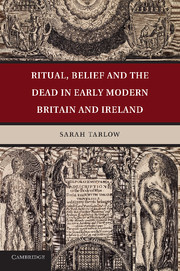Chapter 6 - Conclusions
Published online by Cambridge University Press: 05 July 2014
Summary
The dead body in the early modern period was conceptually situated at the intersection of numerous fields of discourse. It partook of the meanings of individualised personhood inhering in the unique body that took shape from the Renaissance onwards. At the same time, it was understood as a material object with mechanisms that could be analysed through careful study and fully recorded in words and images. In this way it was both unique and universal, although its universality was not the old medieval kind of universal in which all bodies were the same by virtue of being all images of God, but a new medical universal in which the social identity of the body was less significant in understanding its physical features, since one body could usually be substituted for another.
Sofaer (2006) has suggested that for the purposes of archaeological study the human body should be treated as material culture and subjected to the same analytical processes as other artefacts we recover. This book argues that this way of thinking about the human body is possible as a result of a particularly modern concept of corporeality that has developed over the past 500 years and is evident particularly in scientific discourses of the early modern period. However, it would not be correct to say that this disinterested, forensic understanding of the human body was the single or even dominant conception in this period. For emotional and social purposes there is strong evidence that the dead body retained the unique and personal identity of the deceased individual, with some of the attributes of a living body such as power and vigour, and that it even retained a degree of sentience and capacity for voluntary action.
- Type
- Chapter
- Information
- Ritual, Belief and the Dead in Early Modern Britain and Ireland , pp. 191 - 202Publisher: Cambridge University PressPrint publication year: 2010



